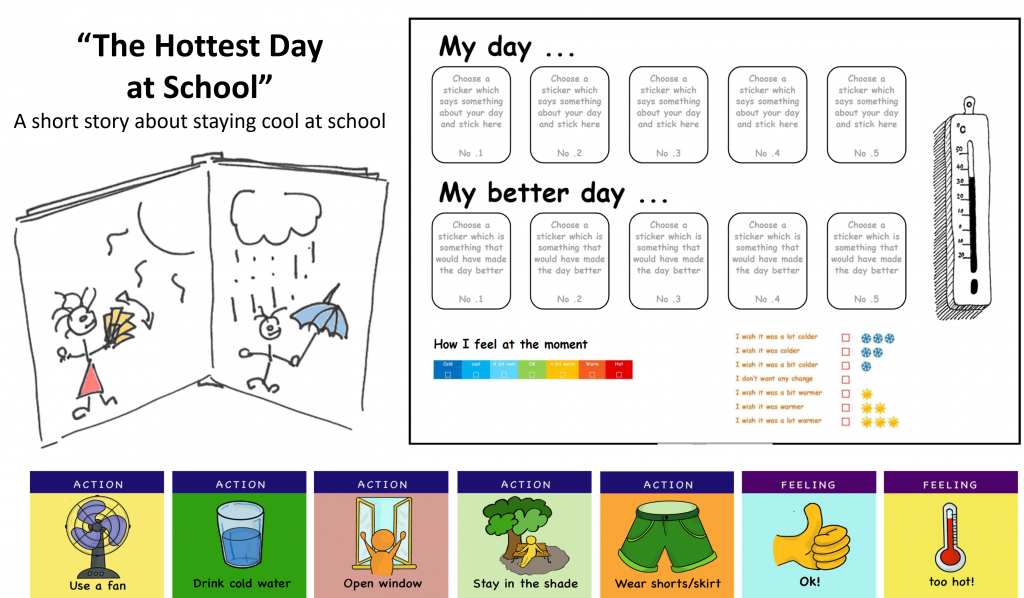This project is a response to the UK’s overheating risk introduced by climate change. By 2070, climate projections for the UK estimate an increase in seasonal average temperatures of up to 5.1°C in summer as well as more intense and frequent extreme events such as heat waves.
Southampton University have been working with Hampshire County Council (HCC) to understand overheating risk in their school building stock since 2021. This work has recently been extended to a national assessment, majority funded by the Department for Education (DfE), which will report in early 2024. The work is focussed on the delivery of : (i) a rapid technical assessment tool for overheating risk at the classroom level for a school, (ii) national stock overheating risk in the current and projected future climate.
Study design
The DfE / HCC/ Southampton University study combines:
- classroom temperature monitoring across a range of HCC schools (in place since June 2022)
- Dynamic simulation modelling incorporating (i) standard building physics components such as ventilation, façade type, built form and construction details alongside, and (ii) consideration of user behaviour and response to a heatwave event.
It is this latter aspect which is key here and is generally poorly understood. In particular, there is little to no data concerning the behaviour of younger school children (KS1 and KS2) during a heatwave event. This is an important public health issue. In essence, how can we enable schoolchildren to change their behaviour during a heatwave event? With this question in mind, this project also sets out to increase the understanding the behaviour of school children during a heatwave through:
- Development on an assessment method and tool (The Little Book of Cool Classrooms and my day sticker activity)
- Test the tool across the portfolio of schools in Hampshire and undertake the analysis to evaluate the impact of the tool and how it feeds into the modelling
“The Hottest Day at School” pre-heatwave story intervention

This book aims to provide thermal comfort information to schoolchildren (KS1 and KS2) via storytelling. The goal is to enable them to have the confidence to take personal actions in a classroom environment (remove a jumper, drink more water, open a window, move away from the sunlight) during a heatwave / warm spell. This story will be read before a heatwave event. During or after the heatwave, children will be asked to complete a sticker board describe their heatwave day (my day) and how they feel this day would have been better (my better day).
The impact of the activity will be evaluated through intervention (story and sticker activity) and control groups (only story). We hope to provide evidence of the short story providing both actual and stated behaviour change in children.
